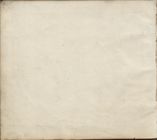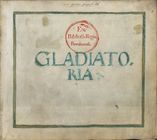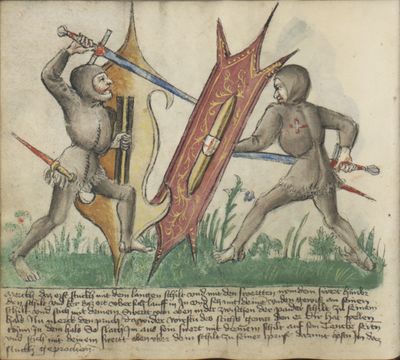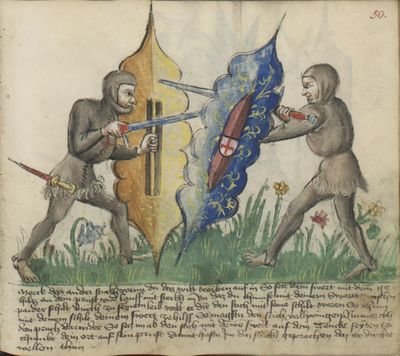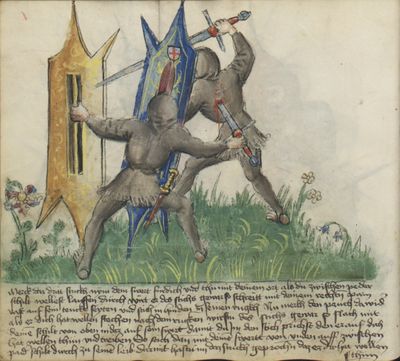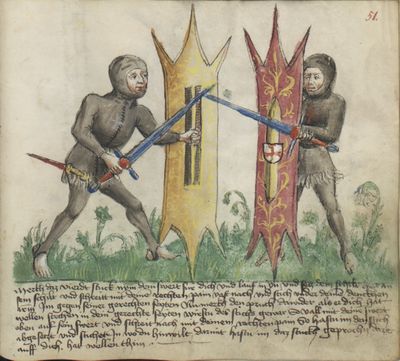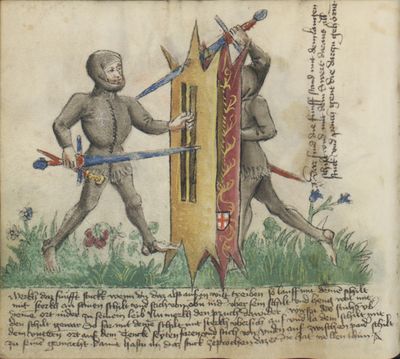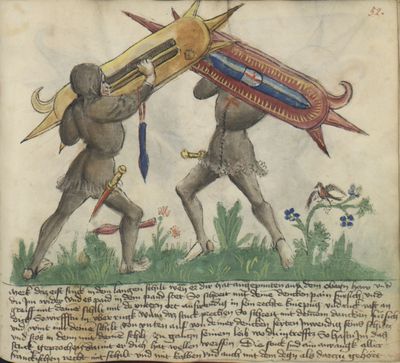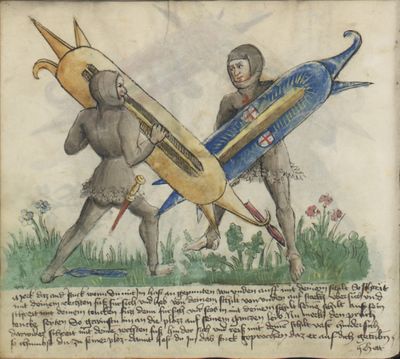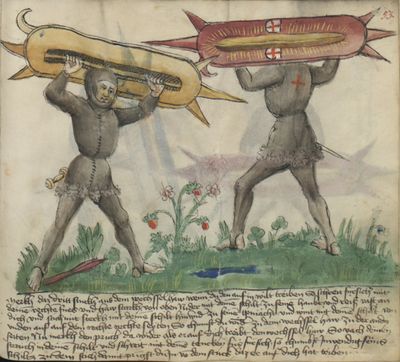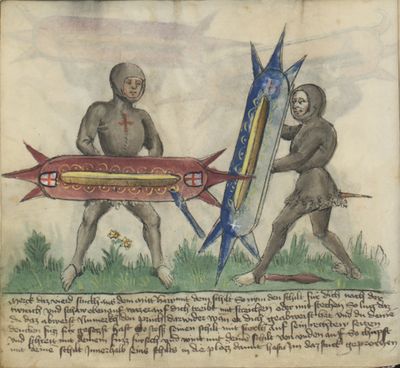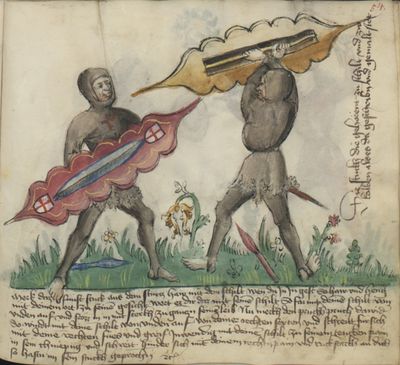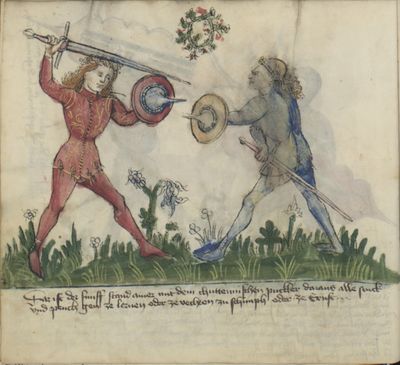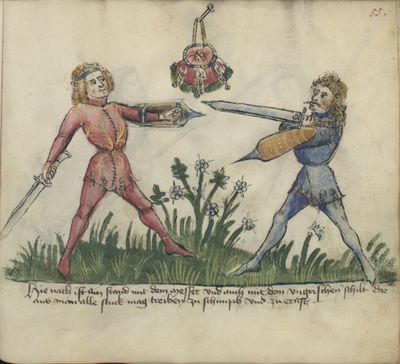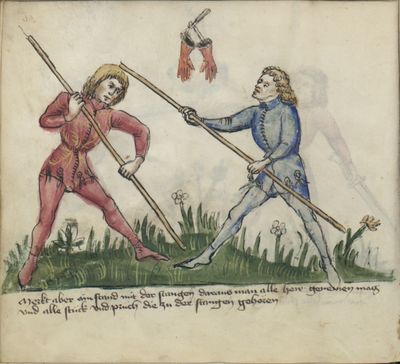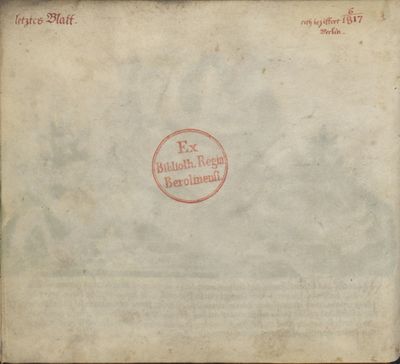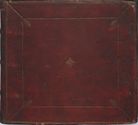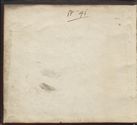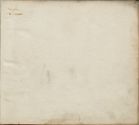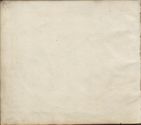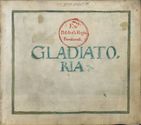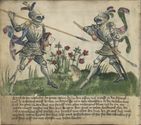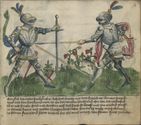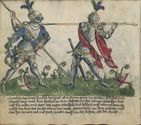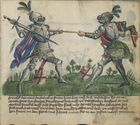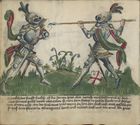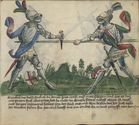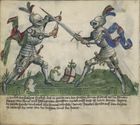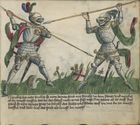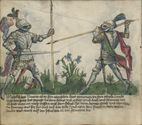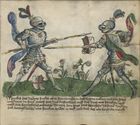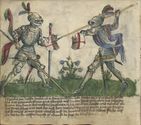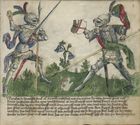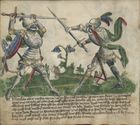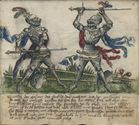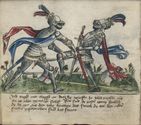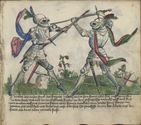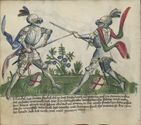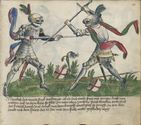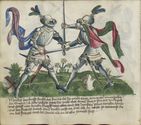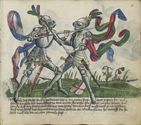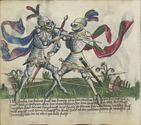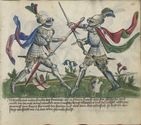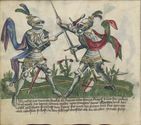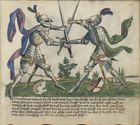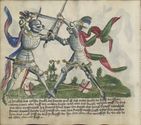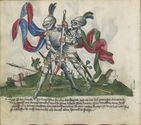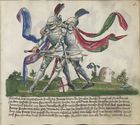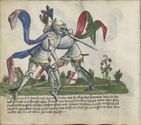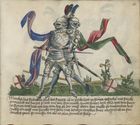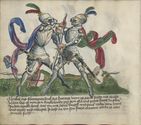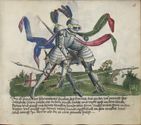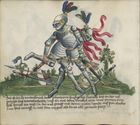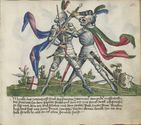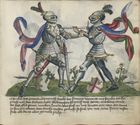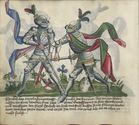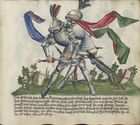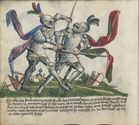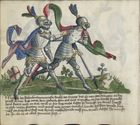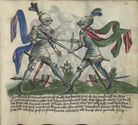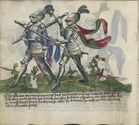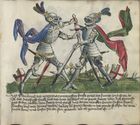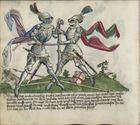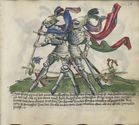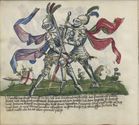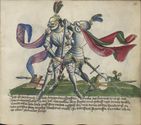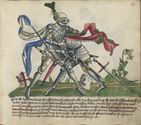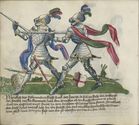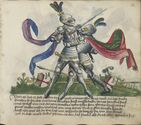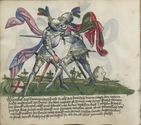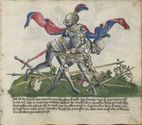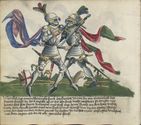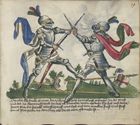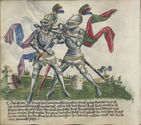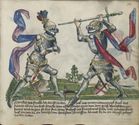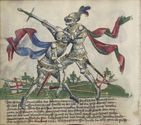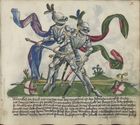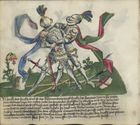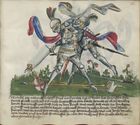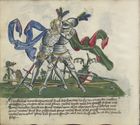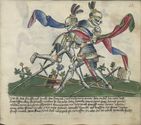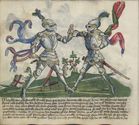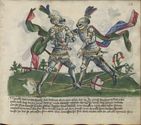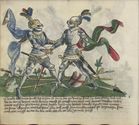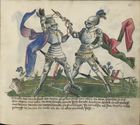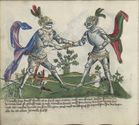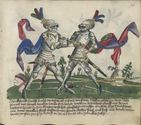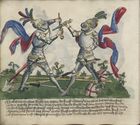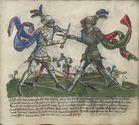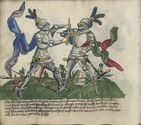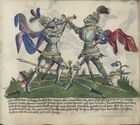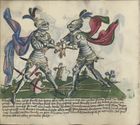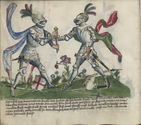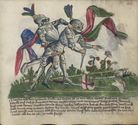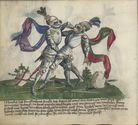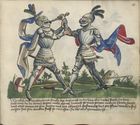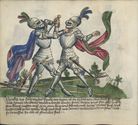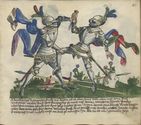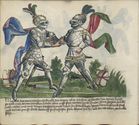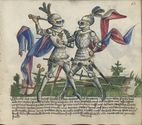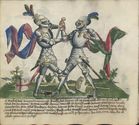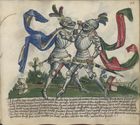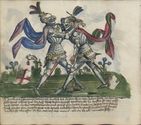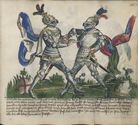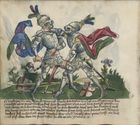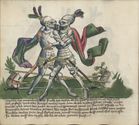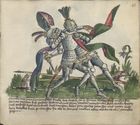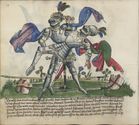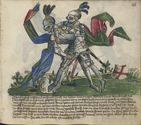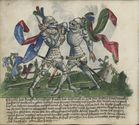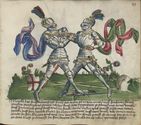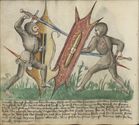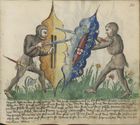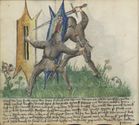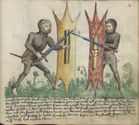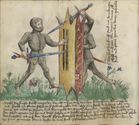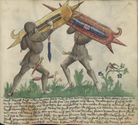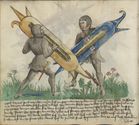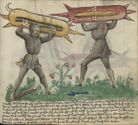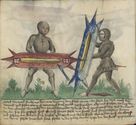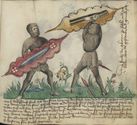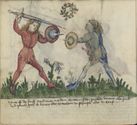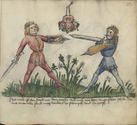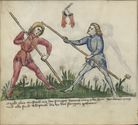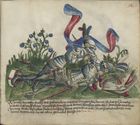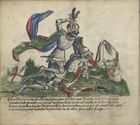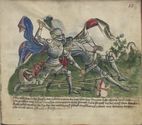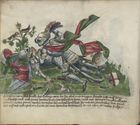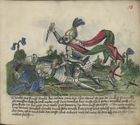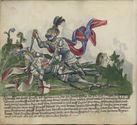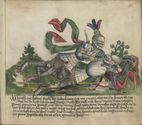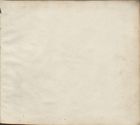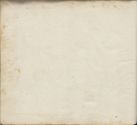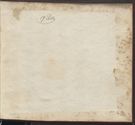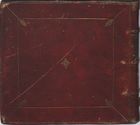|
|
| (3 intermediate revisions by the same user not shown) |
| Line 2: |
Line 2: |
| | <!----------Name----------> | | <!----------Name----------> |
| | | name = [[name::Gladiatoria]] | | | name = [[name::Gladiatoria]] |
| − | | location = [[inventory::MS Germ.Quart.16]], [[museum::Biblioteka Jagiellońska]]<br/>Kraków, Poland | + | | location = [[inventory::MS germ. quart. 16]], [[museum::Biblioteka Jagiellońska]]<br/>Kraków, Poland |
| | <!----------Image----------> | | <!----------Image----------> |
| | | image = | | | image = |
| Line 14: |
Line 14: |
| | | Wierschin's catalog= [[WC::02|2]] | | | Wierschin's catalog= [[WC::02|2]] |
| | | Hils' catalog = [[HK::28]] | | | Hils' catalog = [[HK::28]] |
| − | | Beck catalog = [[BC::38.2.2]] | + | | Beck catalog = [http://kdih.badw.de/datenbank/handschrift/38/2/2 38.2.2] {{#set:BC=38.2.2}} |
| | | Also known as = | | | Also known as = |
| | | Type = {{plainlist | | | Type = {{plainlist |
| Line 41: |
Line 41: |
| | | Previously kept = [[Staatsbibliothek zu Berlin]] | | | Previously kept = [[Staatsbibliothek zu Berlin]] |
| | | Discovered = | | | Discovered = |
| − | | Website = [http://jbc.bj.uj.edu.pl/dlibra/publication/284599/content Library catalog entry] | + | | Website = [https://katalogi.uj.edu.pl/permalink/48OMNIS_UJA/1jhsq6s/alma991015677329705067 Library catalog entry] |
| | | Images = {{plainlist | | | Images = {{plainlist |
| | | [http://jbc.bj.uj.edu.pl/dlibra/publication/284599/content Digital scans] | | | [http://jbc.bj.uj.edu.pl/dlibra/publication/284599/content Digital scans] |
| Line 50: |
Line 50: |
| | | below = | | | below = |
| | }} | | }} |
| − | '''''Gladiatoria''''' (MS Germ. quart. 16) is a [[nationality::German]] [[fencing manual]] probably created in the 1440s.<ref>The date is based on the style of armor used in the illustrations.</ref> The original currently rests in the holdings of the [[Biblioteka Jagiellońska]] in Kraków, Poland. The MS Germ. quart. 16 is part of the [[Gladiatoria group]], a series of several German manuscripts from the 15th century that share the same art style and cover the same material, and is the manuscript for which the complex is named. | + | '''''Gladiatoria''''' (MS germ. quart. 16) is a [[nationality::German]] [[fencing manual]] probably created in the 1440s.<ref>The date is based on the style of armor used in the illustrations.</ref> The original currently rests in the holdings of the [[Biblioteka Jagiellońska]] in Kraków, Poland. This manuscript is part of the [[Gladiatoria group]], a series of several German manuscripts from the 15th century that share the same art style and cover the same material, and is the manuscript for which the complex is named. |
| | | | |
| − | The core of the Gladiatoria group is a series of devices of [[armored fencing]] following the traditional progression of a [[judicial duel]]: beginning with [[spear]]s and small [[shield]]s called ''ecranches'', moving to [[sword]]s, then employing [[dagger]]s on foot and [[wrestling|on the ground]]. (Traditional dueling would often begin on horseback before going to foot combat, and the ''ecranche'' is designed for mounted fighting, but Gladiatoria seems to skip that stage entirely.) The Gladiatoria manuals are interesting texts in that they seem to be contemporary with the tradition of [[Johannes Liechtenauer]], but not directly influenced by it.{{cn}} | + | The core of the Gladiatoria group is a series of [[armored fencing]] pieces following the traditional progression of a [[judicial duel]]: beginning with [[spear]]s and small [[shield]]s called ''ecranches'', moving to [[sword]]s, then employing [[dagger]]s on foot and [[wrestling|on the ground]]. (Traditional dueling would often begin on horseback before going to foot combat, and the ''ecranche'' is designed for mounted fighting, but Gladiatoria seems to skip that stage entirely.) The Gladiatoria manuals are interesting texts in that they seem to be contemporary with the tradition of [[Johannes Liechtenauer]], but not directly influenced by it.{{cn}} |
| | | | |
| | == Provenance == | | == Provenance == |
| Line 173: |
Line 173: |
| | |- | | |- |
| | | class="noline" | [[File:MS Germ.Quart.16 55r.jpg|400px|center]] | | | class="noline" | [[File:MS Germ.Quart.16 55r.jpg|400px|center]] |
| − | | class="noline" | <p>This is a stance with the Messer and also with the Hungarian shield from which all devices can derive in play and in earnest.</p> | + | | class="noline" | <p>This is a stance with the Messer and also with the Hungarian shield from which all pieces can derive in play and in earnest.</p> |
| | | class="noline" | {{paget|Page:MS Germ.Quart.16|55r|jpg}} | | | class="noline" | {{paget|Page:MS Germ.Quart.16|55r|jpg}} |
| | |} | | |} |
Gladiatoria (MS germ. quart. 16) is a German fencing manual probably created in the 1440s.[1] The original currently rests in the holdings of the Biblioteka Jagiellońska in Kraków, Poland. This manuscript is part of the Gladiatoria group, a series of several German manuscripts from the 15th century that share the same art style and cover the same material, and is the manuscript for which the complex is named.
The core of the Gladiatoria group is a series of armored fencing pieces following the traditional progression of a judicial duel: beginning with spears and small shields called ecranches, moving to swords, then employing daggers on foot and on the ground. (Traditional dueling would often begin on horseback before going to foot combat, and the ecranche is designed for mounted fighting, but Gladiatoria seems to skip that stage entirely.) The Gladiatoria manuals are interesting texts in that they seem to be contemporary with the tradition of Johannes Liechtenauer, but not directly influenced by it.[citation needed]
Provenance
Contents
| 1r - 7r
|
Spear in armor from Gladiatoria
|
| 7v - 33r
|
Sword in armor from Gladiatoria
|
| 33v - 49r
|
Dagger in armor from Gladiatoria
|
| 49v - 54r
|
Illustrations
|
Draft Translation 
by Kristopher Micozzi
|
Transcription [edit]
by Kristian Babic, Robert Brunner, Marion Freundl, Alexandra Gießl, Barbara Kappelmayr, Julia Lorbeer, Carsten Lorbeer, Andreas Meier, Marita Wiedner
|
|
|
[1] Note the first element with the longshield and with the sword: take your sword inside the shield and turn the point over at him. Rush in at him and set with your bottom securely on his shield and thrust with your sword from above downward between both shields to his neck. Now note how to counter the thrust against the neck if it happens to you: strike away his sword with your shield upon the left side and thrust with your sword up and over your shield to his breast such that you have countered the initial element.
|
[49v] Merckh daz erst stuckh mit dem langen schilt vnd mit den swertten nym dein swert hinder den schilt vnd ker daz ort vber sich lauff in In vnd setz mit deinem vnden gewiß an seinen schilt vnd stich mit deinem Swertt von oben nider zwischen der paider schilt zu seinem hals Nu merck den pruch da wider wirstü des stichs gewar den er dir hat wellen thun zu dem hals So slach Im aus sein swert mit deinem schilt auf sein Tencke seiten vnd stich mit deinem swertt oben vber dein schilt zu seiner prust darmit hastu Im daz stuckh geprochen .
|
|
|
[2] Note the second element when you will drive it upon him: set your sword with the hilt on your breast and charge in with strength at him so that you come with your sword between both shields through to his body. Should he then thrust at you with his shield against this, then come with your shield and sword to assist so that you make a successful thrust. Now note the counter against this: displace the thrust with your sword about your left side and come with your point onto his breast such that you have broken the element that he tried to do unto you.
|
[50r] Merck daz ander stuckh wenn du daz wilt treiben auf in So setz dein swert mit dem ge hiltz an dein prust vnd lauff mit sterkh in yn daz du chumst mit deinem Swertt zwischen paider schilt durch zu seinem leib wolt er dir den stich mit seinem schilt weren So chum mit deinem schilt deinem swert zehilff So magstu den stich vollpringen Nu merckh den pruch darwider So setz im ab den stich mit deinem swert auf dein Tencke seyten So chumbt dein ort auf sein prust damit hastu Im daz stuckh geprochen daz er dir hat wellen thün –
|
|
|
[3] Note the third element: take your sword forth and go with the point between both shields while rushing in. If he becomes aware of the thrust then stride quickly with your right leg about his left side and thrust him inside in his back. Now note the counter against his thrust after your back should you perceive it: strike with your shield over and down onto his sword such that you break his thrust that he wished to do and drive. Thrust then with your sword from below between both shields through to his body such that you have countered the element that he wished to do unto you.
|
[50v] Merck daz dritt stuckh nym dein swert fürdich vnd thu mit deinem ort als du zwischen peder schilt wellest lauffen dürch wirt er des stichs gewar so schreitt mit deinem rechten pain vast auf sein tencke seyten vnd stich in hinden in seinen rugkh Nu merkh den pruch da wider als er dich hat wellen stachen nach dem rugken wirstu des stichs gewar so slach mit deinem schilt von oben nider auf sein swert damit du Im den stich prichst den er auf dich hat wellen thün vnd treiben So stich dan mit deinem swertt von vnden auff zwischen paiden schilt dürch zu seinem leib darmit hastu im daz stuckh geprochen daz er dir hat wellen thün
|
|
|
[4] Note the fourth element: take your sword forth and rush in at him and set your shield well on his shield striding quickly with your right leg after and thrust under your left arm at him against his right side. Now note the counter against his thrust to your right side should you perceive it: fall with your sword over atop his sword and stride in after with your right leg. Thus you have displaced and thrust him wherever you wish such that you have countered what he wished to do to you.
|
[51r] Merkh daz vierdt stuck nym dein swert fur dich vnd lauf in yn vnd setz dein schilt gut an sein schilt vnd schreitt mit deinem rechten pain vast nach vnd stich vnder deinem denckhen arm Im gegen seiner gerechten seyten Nu merkh den pruch dawider als er dich hat wellen stechen in dein gerechte seyten wirstu des stichs gewar So vall mit deinem swert oben auf sein swert vnd schreit nach mit deinem rechten pain So hastu im den stich abgesetzt vnd stichet In wo du hinwilt darmit hastu im daz stuckh geprochen daz er auff dich. hat wellen thün –
|
|
|
[5] Note the fifth element when you will drive it upon him: rush in with your shield powerfully onto his shield and thrust from above downward over his shield and hang well with your point down to his body. Now note the counter against the thrust over the shield should you perceive it: go with your shield with strength over upon his and let your shield with the lower end point about your left side driving and thrust from below between both shields to his groin such that you counter the element he wished to do to you.
- This is the fifth stance with the longshield and sword which all elements and their counters belong to.
|
[51v] Merkh daz fünfft stuckh wenn du daz also auf in wilt treiben so lauff mit deinem schilt mit sterkh an seinen schilt vnd stich von oben nider vber sein schilt vnd heng wol mit deinem ort nider zu seinem leib Nu merkh den pruch dawider wirstu des stichs vber den schilt gewar So far mit deinem schilt mit sterkh vbersich auf vnd la dein schilt mit dem vnteren ort auf dein Tencke seyten faren vnd stich von vnden auf zwischen paider schilt zu seinem gemächt damit hastu im daz stuck zerprochen daz er dir hat wellen thün
- Daz sind die fünff stand mit dem langen schilt vnd mit dem swert daraus all stuck vnd pruch gent die darzu gehörent
|
|
|
[6] Note the first element of the longshield with a bind made from the over hewing: stride with your left leg forth and grip with your shield using the lower point outside in his right kneecap and wrench firmly toward yourself so that you force him onto his backside. But if he counters this: stride with your left foot forth and wind with your shield from below from your left side inside his shield and strike in with your shield toward the whole of his body where you meet. Thus you have broken the element where he wished to throw you. This element and attack belongs to the Frankish tradition with cudgel and dagger.
|
[52r] Merk daz erst stuck in dem langen schilt wenn er dir hat angepunten aus dem oberen haw vnd du Im wider vnd es paid in dem pand stet So schreit mit deinem dencken pain fursich vnd greiff mit deinem schilt mit dem vnteren ort auswendig in sein rechte kniepüg vnd ruck vast an dich So wirffstu in vber rugk wiltu daz stuck prechen So schreit mit deinem dencken fürsich vnd wint mit deinem schilt von vnten auf von deiner dencken seyten Inwendig seins schiltz vnd stös in denn mit deinem schilt zu gantzen seinem leib wo du in trefftz So hastu Im das stuck geprochen damit er dich hat wellen werffen // Die stuck sind ain anvangk aller franckischen recht mit schilt vnd mit kolben vnd auch mit den degen alz dartzu gehört
|
|
|
[7] Note the second element in which you have bound from below on the shield: stride with your right foot forth and heave from your shield from below over his with strength and stride with your left foot forth and strike him with your shield onto his shield about his left side such that you gain an openings around his whole body. Now mark the counter against it: stride with your right foot inside his and wrench with your shield firmly inside him so that you come to his opening. Thus you have countered the element he drove against you.
|
[52v] Merk daz ander stuck wenn du mit Im hast an gepunten von vnden auff mit deinem schilt So schreit mit deinem rechten fuß fürsich vnd heb von deinem schilt von vnden auf starkh vbersich vnd schreit mit deinem tencken füzz denn fürsich vnd stös in mit deinem schilt seinen schilt auf sein tencke seyten So gewinstu im an die plözz auf seinem ganzen leib Nu merkh den prüch darwider schreit mit deinem rechten füß hinder sich vnd reiß mit deinem schilt vast hinder sich so chumbst du zu seiner plöz damit hast du Im das stuck geprochen daz er auf dich getriben gehett
|
|
|
[8] Note the third element which comes out from the changing hew and when you will drive it at him: stride toward him with your right foot and hew strongly from above downward with your shield to his head, and wrench quickly toward yourself and thrust with strength with your shield in against his groin, and turn with your shield from below about your right side such that you come to the changing hew on the other side. Now note the counter against this if he drives the changing hew: so catch your strike in your shield and stride with your left foot forth such that you come inside his shield for a thrust. Thus you have countered the element he drove against you.
|
[53r] Merkh daz dritt stuckh aus dem wechssel haw wenn du den auf in wilt treiben So schreit fürsich mit deinem rechten fues vnd haw starkh von oben Nider mit deinem schilt zu seinem haubt vnd reiß vast an dich vnd stich mit sterkh mit deinem schilt hin wider zu seinen gemächt vnd wint mit deinem schilt von vnden auf auf dein rechte rechte seyten So chumst du wider zu dem wechssel haw zu der andern seiten Nu merkh den prüch da wider als er auf dich treibt den wechssel haw So vach deinen straich in deinen schilt vnd schreit mit deinem tencken füs fürsich so chumbst Inwendig seins schiltz zu dem stich damit pringst du In von dem stuck daz er auf dich hat triben –
|
|
|
[9] Note the fourth element which comes from the middle hew with the shield: take your shield forth from yourself after the twirch(?) and look evenly upon what he will drive unto you, be it strike or thrust, and see that you foil it. Now note the counter against this: when he goes to foil what you have done, and your left foot is set forth, then strike his shield with strength about his right side and stride with your foot forth and wind with your shield from below so that you come with your shield inside his shield, exposing an opening. Thus you have countered the element.
|
[53v] Merck daz vierd stuckh aus dem Mitterhaw mit dem schilt So nym den schilt für dich nach der twirch[2] vnd schaw eben auf waz er auf dich treibt mit streichen oder mit stechen So lug daz du daz abweist Nu merkh den prüch darwider wann er dich geabweist hat vnd du deinen dencken füzz für gesetzst hast So stösß seinen schilt mit sterkh auf sein rechten seiten vnd schreit mit deinem füzz fürsich vnd wint mit deinem schilt von vnden auf So chumpst mit deinem schilt Innerhalb seins schilts in die plözz damit hastu Im daz stuck geprochen
|
|
|
[10] Note the fifth element with the shield that comes from the plunging strike: hew and hang with your point to his face, and if he wards this with his shield, then go with your shield from below and strike him with strength to his whole body. Now note the counter against this: wind your shield from below from your right side and stride forth from him with your right foot. And grip inside with your shield to his left leg at his kneecap and stride inside him with your right leg and wrench strongly toward yourself such that you have broken his element.
- The elements here belong to the shield and club as they are described and illustrated here.
|
[54r] Merk daz fünft stuck aus dem sturtz haw mit dem schilt wenn du In In gest So haw vnd heng mit deinem ort zu seinem gesicht wert er dir daz mit seinem schilt So far mit deinem schilt von vnden auf vnd stözz in in mit sterkh zu gantzn seinem leib Nu merkh den pruckh pruch dawider So windt mit deinem schilt von vnden auf von deiner rechten seyten vnd schreitt für sich mit deinem rechten fues vnd greif Inwendig mit deinem schilt zu seinem tencken pain in sein chniepüg vnd schreit hinder sich mit deinem rechten pain vnd ruck starkh an dich so hastu im sein stuckh geprochen etc
- Die stuckh die gehören zu schilt vnd zu kolben als es da geschribn vnd gemalt stet
|
|
| 54v
|
|
| 55r
|
|
| 55v
|
|
| 56r - 59r
|
Wrestling from Gladiatoria
|
| 59v
|
|
Gallery
A collation diagram for this manuscript is available on the
index page.
Images hosted on Wiktenauer with permission from the Biblioteka Jagiellońska.
Additional Resources
The following is a list of publications containing scans, transcriptions, and translations relevant to this article, as well as published peer-reviewed research.
- Cavazzuti, Carlo (2015). Gladiatoria. Asola: Gilgamesh Edizioni. ISBN 978-88-6867-080-1.
- Hils, Hans-Peter (1987). "Gladiatoria: Über drei Fechthandschriften aus der ersten Hälfte des 15. Jahrhunderts." Codices manuscripti & impressi 13: 1-54.
- Knight, Hugh T., Jr. (2008). The Gladiatoria Fechtbuch: A Fifteenth-Century German Fight Book. Self-published.
- Tobler, Christian Henry (2022). Lance, Spear, Sword, & Messer: A German Medieval Martial Arts Miscellany. Wheaton, IL: Freelance Academy Press. ISBN 978-1-937439-64-4.
- Walczak, Bartłomiej (2008). "Judicial Armoured Dagger Combat of Gladiatoria and KK 5013." Masters of Medieval and Renaissance Martial Arts: 173-196. Ed. by John Clements. Boulder, CO: Paladin Press. ISBN 978-1-58160-668-3.
References
- ↑ The date is based on the style of armor used in the illustrations.
- ↑ twirch nicht ganz eindeutig zu lesen, twirrch ?
Copyright and License Summary
For further information, including transcription and translation notes, see the discussion page.

